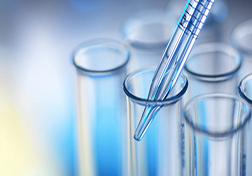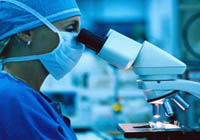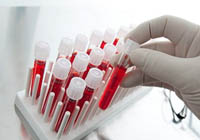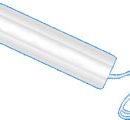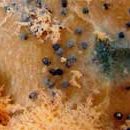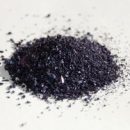The overall analysis of urine is the most common analysis, which accounted for each person. Total urine analysis is used in the diagnosis of many diseases, primarily kidney and urinary system.
Content
General urine analysis is one of the most common analyzes, which accounted for every person. Despite the fact that the overall analysis of urine is a routine research method, it is still widely used as one of the most important methods of examination with most diseases, and in the diagnosis of kidney diseases and the urinary system - it is given a leading role.
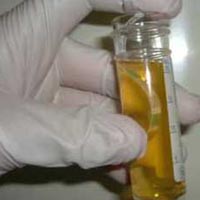 General urine analysis includes:
General urine analysis includes:
- Evaluation of the physico-chemical characteristics of urine
- Colour
- transparency
- relative density
- pH (acidity)
- protein
- glucose
- Ketone bodies
- bilirubin
- Reaction to blood
- Urinary sediment microscopy
- epithelium
- Leukocytes
- Erythrocytes
- Cylinders
- slime
- Bacteria
- Sololi
Research Indications:
- Diseases of the kidneys and urinary system (performed repeatedly in the dynamics to assess the status and control of therapy)
- Pain in the back
- Violation of urination
- Appearance of edema
- Hyperthermia (body temperature increase)
- Screening surveys in professional skills (it is recommended to perform analysis 1-2 times a year
- diabetes
- Transferred streptococcal infection (angina, scarletten) - It is recommended to take the urine analysis after 1-2 weeks after recovery
Special training for research is not required, it is desirable not to eat vegetables and fruits that can change the color of urine (beets, carrots, citrus, watermelons, red wine, polyvitamins). For analysis it is necessary, after a thorough toilet of external genital organs, collect the entire morning portion of urine into a dry, clean capacity, mix and select in a vacuum test tube. Women are not recommended to take urine test during menstruation. Delivery to the laboratory - within 24 hours at a temperature of + 2 + 24.
Void color value
The color of normal urine depends on its concentration and can range from straw yellow to amber-yellow. Normal urine color is due to the content of urinary pigment - Urochrome. Changing the urine color can be due to the appearance of pathological impurities in it (bilirubin, red blood cells, salts, etc.), as well as under the influence of components of food, medicinal and contrast agents.
Transparency urine
Norma urine is transparent (in this case opposite the parameter «transparency» will stand the result - «Full»). Urine turbidity can be the result of the presence of erythrocytes, leukocytes, epithelium, bacteria, fat droplets, falling into sediment salts (urates, phosphates, oxalates); Transparency depends on the concentration of salts, pH, urine storage temperature (low temperature contributes to the loss of salts in precipitate). With long standing urine can become muddy as a result of breeding bacteria. Normally, a small turbidity may be due to epithelium and mucus.
The value of the relative density (specific gravity) of urine
The determination of the relative urine density has a large clinical value, as it gives an idea of the concentration of substances dissolved in it (urea, uric acid, salts, electrolytes) and reflects the ability of the kidneys to concentration and breeding. It should be borne in mind that relative density (specific weight) depends not only on the amount of dissolved particles, but also on their molecular weight.
In the norm of the oscillation of the relative density during the day amount to 1008-1025.
Urine reaction indicators (pH urine)
The kidneys play an important role in maintaining the acid essential equilibrium of the body. Kidney ability to remove hydrogen and bicarbonate ions from blood - one of the blood pH mechanisms. The concentration (activity) of free hydrogen ions (H +) in the urine represents urine reaction (pH of urine).
In the norm of pH urine usually weakly acid (5.0-6,0), but may have a different reaction (pH from 4.5 to 8.0). The oscillations of the pH of the urine are due to the composition of the nutrition: the meat diet causes the acid urine reaction (5.0), the predominance of plant and dairy food leads to urine lashing (>7.0).
Protein definition in urine
The protein in the urine is one of the most diagnostically important laboratory signs of kidney pathology. Due to the large size of protein molecules, as well as their structure, most of the proteins of blood does not pass through the membrane of the kidney gloms. Therefore, healthy people protein in the urine or absent, or maybe in low concentrations up to 0.1 g / l - physiological proteinuria.
Identification of glucose in the urine
Normally, the human glucose person falls into the primary urine (after filtration through the membrane of the kidney glomers), almost completely reabsorbed in the renal tubules and is not determined in the final urine. At the concentration of glucose in the blood of more than 9.99 mmol / l - the excess of the renal threshold (the maximum ability of the kidney to the reverse absorption of glucose) glucose begins to flow into the urine, and glucosuria occurs.
The definition of glucose in the urine is of the greatest value for the diagnosis of diabetic diabetes, as well as in order to assess the effectiveness of antidiabetic therapy and as an additional criterion for compensation for diabetes.
Definition of ketone bodies in the urine
Normally, the ketone bodies in the urine are missing. The content in the urine of ketone bodies is called ketonuria. Ketone bodies include three compounds: acetone, acetoxus acid and beta hydroximaceous acid. Ketone bodies are formed as a result of decay of fatty acids, in the tissues they quickly oxidize to CO2 (carbon dioxide) and water, so the minimum undetectable amount of ketone bodies is displayed with urine per day.
Ketonuria can be a consequence of increased formation of ketone bodies and a consequence of the disorders of their decay. Most often, Ketonuria has to be observed with severe diabetes, but it meets with carbohydrate starvation.
Definition of bilirubin in urine
There is no bilirubin in the urine. The appearance in the urine of bilirubin is called bilirubinuria. Bilirubinuria is found in diseases of the liver and biliary pathways, mainly in the parenchymal and mechanical (obtuctive) jaundice, when the concentration of the associated (direct) bilirubin increases in the blood, since only the soluble bilirubin fraction can get into the urine. With a hemolytic yellow bilirubinemia, it is not observed, since the free (indirect) bilirubin does not fall into the urine.
Determination of epithelial cells in the urine
When microscopy in urinary sediment, you can meet the cells of the flat, transitional and renal epithelium.
Flat epithelium cells fall into urine from exterior genitals and urethra (urethra). They meet in the urine in healthy people (women may be present in large quantities); no special diagnostic value.
Determination of leukocytes in the urine
Leukocytes in the urine of a healthy person are represented mainly by neutrophils and are contained in small quantities (in men - 0-3 in sight; in women and children - 0-5 in sight). An increase in the number of leukocytes in the urine of more than 5 in the field of view is called leukocyturia. The following types of leukocyturia are distinguished:
- infectious leukocyturia (bacterial inflammatory processes of the urinary tract - pyelonephritis, prostatites, cystitis, urethritis); Pyuria (pus in the urine) can be determined even macroscopically and corresponds to content in urine 60 or more leukocytes in sight
- Aseptic leukocyturia takes place when glomerulonephritis, amyloidosis, chronic renal transplant rejection, chronic interstitial jade
The presence of leukocytes in the urine can also be due to an admixture of the urine of the outcome of the exterior genital organs with vulvivagint, not sufficiently careful toilet of the exterior genitals when collecting urine for analysis.
Determination of red blood cells in the urine
Normally, erythrocytes in the urine sediment are missing or single in the preparation. When deciding in the urine of red blood cells, even in a small amount, further observation and repeated studies of urine are always required (it is also necessary to eliminate the possibility of urine pollution by blood as a result of menstruation).
Erythrocytes may be unchanged, t.E. containing hemoglobin, and modified, free from hemoglobin, colorless, in the form of single-circuit or double-circuit rings. Such red blood cells are found in the urine of low relative density. In the urine of high relative density, red blood cells are wrinkled.
Erythrocytes can occur either from kidney or from urinary tract. The appearance of erythrocytes in the urine is called hematuria. Hematuria, detected only microscopically (does not affect the color of urine), is called microhematuria; Hematuria, detected even with macroscopic examination, is called Macro Hematura.
Detection of bacteria in the urine
Bacteria in the urine is absent or may be determined in small quantities (no more than 2x103 microorganisms in 1 ml). Bacteriuria - not absolutely reliable evidence of the inflammatory process in the urinary system. Certificate is crucial. In the study of general analysis of urine, only the fact of the presence of bacteriuria states. Determine the form of bacteria and assess the level of bacteriuria, as well as identify the sensitivity of microorganisms to antibiotics with the help of urine bacteriological sowing.
Detection of salts in the urine
The inorganic precipitate of urine consists of salts, which, when standing urine, falls into the precipitate in the form of crystals and amorphous masses. Low temperature also contributes to the formation of crystals. The character of salts depends on the colloidal state of urine, pH and other properties. With the acidic urine reaction: urinephid salts and oxalates are found, with an alkaline reaction of urine in it find the sour urinemid ammonium, triphelphosphates, amorphous phosphates.
Excessive salts in the urine contributes to the formation of concrections and the development of urolithiasis. At the same time, the diagnostic value of the presence in the urine of the crystals of salts is usually small.



